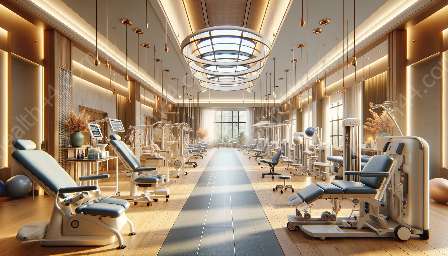Home health care equipment, rehabilitation equipment, and medical devices & equipment play crucial roles in providing care, support, and assistance to individuals in need. Whether it's recovering from an injury, managing a chronic condition, or simply aging gracefully, these tools are instrumental in improving quality of life and maintaining independence. In this comprehensive guide, we'll delve into the world of home health care equipment, explore its compatibility with rehabilitation equipment and medical devices, and discuss the wide-ranging benefits of these essential tools.
Understanding Home Health Care Equipment
Home health care equipment encompasses a wide range of tools and devices designed to support individuals with medical conditions or mobility limitations. These items are specially designed to be used in a home setting, allowing individuals to maintain their independence and receive the care they need without the need for constant hospital visits. Some common examples of home health care equipment include:
- Mobility Aids: such as wheelchairs, walkers, and canes, which help individuals move around and perform daily activities.
- Home Monitoring Devices: including blood pressure monitors, pulse oximeters, and glucose meters, which allow individuals to track their health at home.
- Bathroom Safety Equipment: such as grab bars, shower chairs, and raised toilet seats, which make bathrooms safer and more accessible.
- Medical Beds and Lifts: designed to provide comfort and safety for individuals with mobility challenges.
Exploring Rehabilitation Equipment
Rehabilitation equipment is specifically designed to support individuals in their recovery and rehabilitation journey. Whether it's regaining strength after an injury or improving mobility after surgery, rehabilitation equipment plays a critical role in facilitating the healing process. Some common types of rehabilitation equipment include:
- Physical Therapy Tools: such as resistance bands, exercise balls, and balance equipment, which help individuals rebuild strength and flexibility.
- Mobility Devices: including parallel bars, gait belts, and transfer boards, which assist individuals in relearning how to walk and move safely.
- Assistive Devices: such as reaching aids, dressing sticks, and adaptive utensils, which aid individuals in performing daily activities independently.
- Pain Management Equipment: such as TENS units and hot/cold therapy devices, which provide relief from pain and discomfort during rehabilitation.
Discovering Medical Devices & Equipment
Medical devices and equipment encompass a broad spectrum of tools used in the diagnosis, treatment, and management of various medical conditions. From diagnostic tools to life-saving devices, these tools are essential in providing effective and efficient healthcare. Some examples of medical devices and equipment include:
- Diagnostic Equipment: such as stethoscopes, thermometers, and otoscopes, used by healthcare professionals to assess patients' health.
- Lifesaving Devices: including defibrillators, nebulizers, and oxygen concentrators, which are critical in emergency situations and for managing chronic conditions.
- Surgical Instruments: such as scalpels, forceps, and sutures, used by surgeons and medical professionals during surgical procedures.
- Rehabilitation Machines: such as continuous passive motion (CPM) machines, which aid in the recovery of joint mobility and function after surgery or injury.
The Benefits of Home Health Care Equipment, Rehabilitation Equipment, and Medical Devices & Equipment
The use of home health care equipment, rehabilitation equipment, and medical devices & equipment offers a multitude of benefits for individuals and healthcare providers alike. These tools contribute to:
- Enhanced Quality of Life: By providing individuals with the support and assistance they need to manage their health conditions and perform daily activities, these tools improve overall quality of life.
- Independent Living: Home health care equipment allows individuals to remain independent and live comfortably in their own homes, reducing the reliance on constant caregiving.
- Efficient Care Delivery: Healthcare providers can deliver care more efficiently and effectively by utilizing various medical devices and equipment, leading to better patient outcomes.
- Accelerated Recovery: Rehabilitation equipment aids in the recovery process, helping individuals regain strength, mobility, and function at a faster pace.
- Safe and Accessible Environments: With the use of home health care and rehabilitation equipment, individuals can create safe and accessible environments, reducing the risk of accidents and injuries.
Final Thoughts
Home health care equipment, rehabilitation equipment, and medical devices & equipment are indispensable tools that contribute significantly to the well-being and independence of individuals in need. From mobility aids and rehabilitation tools to diagnostic equipment and lifesaving devices, these items play a critical role in improving health outcomes, enhancing quality of life, and empowering individuals to live life to the fullest. By understanding the different types, uses, and benefits of these essential tools, individuals, caregivers, and healthcare professionals can make informed decisions and provide the best possible care and support.


